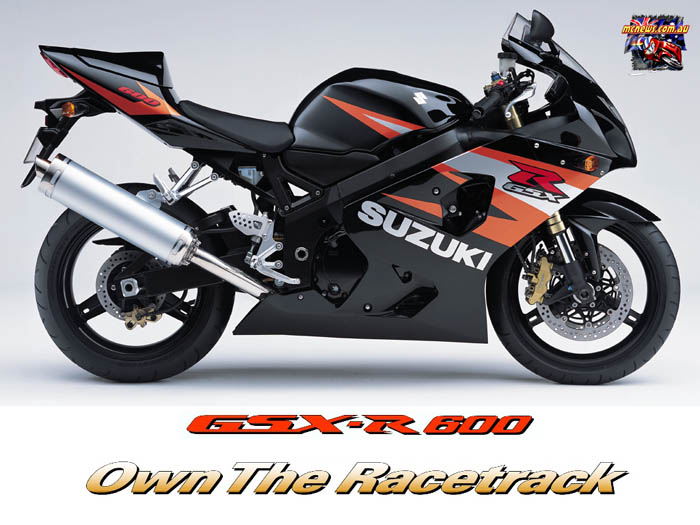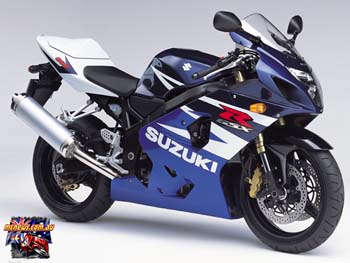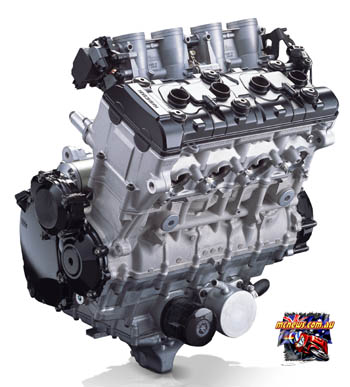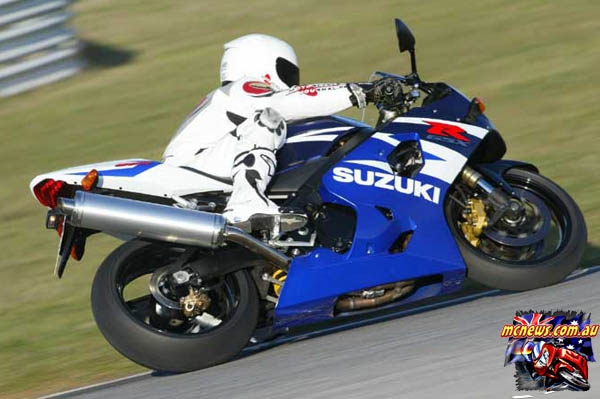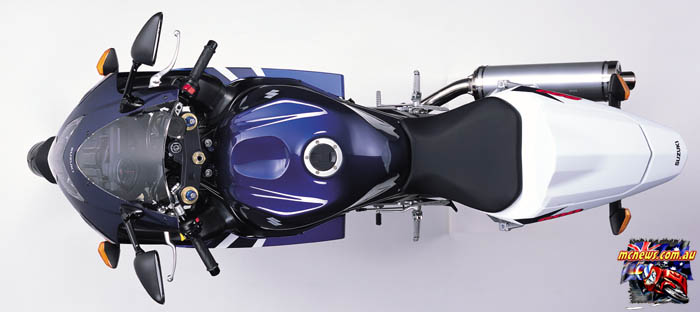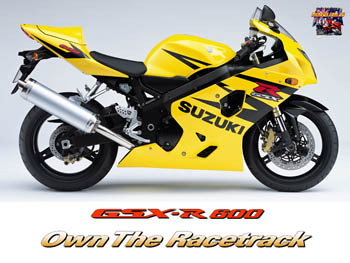Sitting in the pit area at Misano, Italy, I find myself feeling a little bewildered and confused. Sharing my thoughts with some of the other journalists attending the world press launch of Suzuki’s new GSX-R600, I’m not alone.
How in the world can I write about this bike without it sounding like a factory brochure? The thing is about as perfect as anything I have ever ridden on a racetrack and, outside of some minor suspension and lever adjustments, all I have to do is sit on it and twist the throttle. No fuelling glitches, no brake fade, no instability…nothing. Just a lightening-quick, featherweight 600cc supersport machine that has been designed with one goal in mind, “to own the racetrack.”
Prior to putting the bike though its paces, we enjoyed a lengthy and detailed press conference to learn about the many, complex changes the GSX-R600 has received this year. In an effort to find class winning horsepower, the fuel-injected engine has undergone a total redesign.
Factory literature shows four per cent more power, and with the assistance of ram air this figure is quoted as 126PS. Peak torque is now listed as three percent stronger. This is achieved in part by the use of a new fuel injection system, which is 370 grams lighter than last year’s.
Where the 03 used four single-barrel throttle bodies, the 04’s are dual double-barrel units with SDTV (Suzuki Dual Throttle Valve). Basically containing two butterfly valves inside the throttle body, the primary is controlled by the rider, the secondary by the bike’s smaller, lighter ECM.
Reading information from sensors located on the crankshaft, the gearbox and the throttle, the ECM uses a stepping motor. This opens and closes this secondary butterfly, depending on the engine rpm, the gear position, or how much throttle the rider is dialing in. The result is a feel that is very similar to that of CV carburetors allowing the bike to pull strongly from as low as 6,000rpm. Pretty amazing when you think it revs to 15,500rpm!
The whole fuel injection system is a lot simpler, requiring less connecting poles and tuning links. Throttle body pitch has been changed, and this allows the air box to be 10mm shorter and 20mm narrower. It also means the fuel tank can be narrower. Intake efficiency is further improved with this year’s injectors being a multi-hole type, instead of the single pintle type used last year. Better fuel atomization, quicker throttle response and improved atomization are responsible for one percent of the GSX-R’s torque increase.
Inside the engine, reciprocating mass is reduced by five percent thanks to titanium valves, lighter pistons, camshafts, valve buckets and more. Displacement, bore and stroke are unchanged, but compression ratio has increased to 12.5:1 from 12.2:1 with the use of flat top pistons. Normally this would be achieved by raising the piston dome, but Suzuki’s engineers didn’t want any chance of the pistons hitting the valves. So, they achieved the compression hike by using a more compact combustion chamber.
Providing the titanium valves a home, the new cylinder head has been through the total re-design process, now weighing in 80 grams lighter. As part of this diet, the cylinder head bolts have been reduced 3.5 grams in weight for a total saving of 35 grams, and the cam housing bolts 1.4 grams for a further 28-gram loss. Below the flat top pistons, the connecting rods are 3mm shorter and attach to a new crankshaft that features slimmer journal diameters, 30mm instead of 32mm. This is to optimize crankshaft balance and to reduce mechanical loss.
No stone has been left un-turned, and looking into the gearbox shows closer gear ratios and a totally redesigned shift fork. I have no complaints about the shifting, only using the clutch for down shifting as the next ratio is effortlessly selected whenever needed. The non-adjustable cable clutch is very light, with a 25 per cent reduction in the spring rate. Initial load has been raised by four percent though to deal with the engine’s extra power.
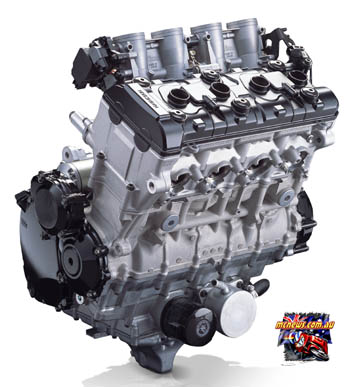
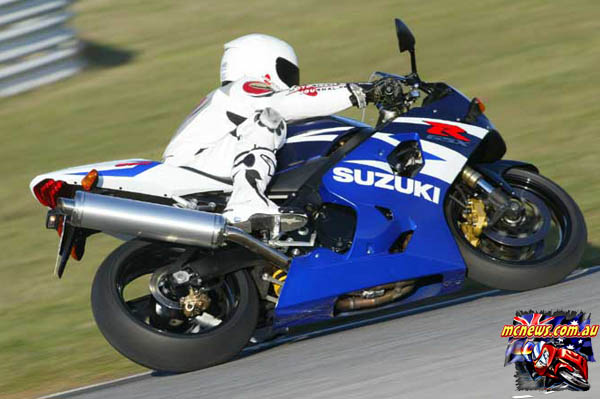
Moving to the chassis, the Gixxer gets an all-new, thinner Aluminium twin-spar extrusion frame. Overall height is increased 1mm, while rake is 3mm sharper at 93mm and trail 23.25 degrees compared to last year’s 24-degrees. The wheelbase remains the same at 1,400mm, as does the bike’s 715mm width
Finished in satin black, it also differs from last year’s bike with the removable aluminium sub-frame attaching directly to the frame. The seat rails are now made of cast aluminium, as is the cast bridge that runs between them, and the whole plot is said to be more crash resistant.
Attached to the rear of the frame the new swingarm features some serious bracing. Actually looking like last year’s swing arm with the braces welded on top, it shares the same length, height and width, so maybe it is? The welds are actually very smooth, and the unit looks extremely solid holding the chunky 180 series tyre in place.
Up front, Suzuki has chosen a Showa 43-mm inverted fork for increased rigidity and overlap. Fully adjustable for all the usual stuff, I only make a couple of changes on the second day of testing as my speeds pick up.
Exiting the high-speed left hand turn onto the back straight around 200kph, the front end is starting to feel vague as the pace increases. I have a quick word withSuzuki’s test rider Mr. Murata, which results in him dialing in more rebound up front and more compression out back. Putting a little extra weight on the front end, as well as slowing it down a bit, does the trick, allowing me to push harder through the turn.
The overall suspension settings are actually remarkably close to showroom stock, with the exception of a little extra pre-load up front to deal with the very high-speed braking at Misano. Out back, a little extra compression has also been added, but with Mr. Murata weighing less than me maybe it wasn’t enough for my 85kg weight? The rear shock itself is a 46mm Showa unit, and differs from last year’s with a thicker diameter internal rod, as well as being slightly shorter. Adjustable for the big three, it performed flawlessly over the two-day test.
At the bottom of the inverted forks, the GSX-R600 rolls on the same 17-inch three-spoke alloy wheels as last year’s model. Running the same 180/55 ZR 17 rear and 120/70ZR 17 front, the bikes we rode came equipped with Bridgestone BT014SFs. These are for Europe only, and Dunlop D218s will be fitted for America, and possibly Australia. Full marks to the Bridgestone tyres. With air temperatures hovering around the 37-42c mark, and cold winds blowing across the raceway, they gave a whole lot more grip than I originally thought possible.
Attached to the attractive wheels, this year’s brake discs are 20mm smaller at 300mm, and 0.5mm thicker. They are also 20 grams lighter. Clamping down on these new rotors, Suzuki uses Tokico radial-mount calipers that allow for more rigidity and improved braking. Lightly squeezing on the six-way adjustable lever at over 240kph scrubbed off the required speed to enter the horseshoe with absolutely no drama. There is no harshness in the operation, the brakes just progressively getting stronger the more I pull. Riding the same bike for both days, the brake action is just as strong during the last session as it was during my first.
Partly responsible for this incredible set up, the front master cylinder is a radial-piston affair. Unlike a conventional piston that works horizontally against the lever, the radial piston is positioned vertically, allowing a more direct force from the lever to the piston. This gets more fluid to the brake calipers and is said to improve feel and feedback.
Visually, the bike certainly shows its GSX-R heritage and has been styled this year for a more aggressive look. Up front, the vertically stacked headlights replace the old side-by-side jobs on the 03, and sit in a narrower, more aerodynamic fairing.
The two-stacked headlights consist of a projector-type on the bottom for low beam, and a multi reflector type up top for the main. Punching the smallest hole possible through the air, even the GSX-R’s turn signals have been given a new more aerodynamic shape, as well as being made lighter.
Out back is the tight looking tail section, with two sets of seven horizontal LED lights. The fuel tank is narrower and shorter this year to make life easier for the rider during cornering transitions, or getting hard on the brakes. I like being able to hook my outside leg under the small lip while resting my elbow on my knee, and it is helpful during tuck and squeeze time in the fast sections. The seat gives no complaint, serving as a useful work platform to slide on and off the bike, while giving enough room for my near six-foot frame while making hot laps onboard the high-revving six.
Out on the track, a lightening quick glance shows 245kph on the digital speedometer, with the tachometer needle hitting red line at 15,500 rpm in fifth as I approach the horseshoe. Rolling off the throttle and onto the brakes, I slide rearward to keep the back wheel on the floor. Down shifting, I dive left and rail round on a steadily increasing throttle, before nailing it back up to red line. Briefly hitting the limiter, it is time to get hard on the brakes before the tight uphill right-hander that leads to the first of Misano’s two chicanes.
Hanging way off to keep the tyres as upright as possible, I feed in the power and hold the same gear up the hill, before sending brake fluid to the eight pistons down at the front wheel. Clipping the kerb into the chicane, I effortlessly flick the bike left for the run up to the top horseshoe. Third gear ends a tad bit short of the corner, but to save two shifts I hold it on the limiter before arcing through the corner. Accelerating to the red line, I indulge in the intoxicating intake roar that resonates as the engine rips past 9,000rpm. Flicking through the chicane, a good drive has the bike screaming onto the front straight, knee puck skimming the tarmac as I attempt to ignore the concrete three feet to my right.
Flashing across the start/finish line it is time to start another lap. Riding harder and more aggressively on the 161kg Suzuki GSX-R600 than I have in a while, the bike takes it all in its stride. Totally in control, it exudes confidence from every pore and is going to make a hero out of anyone that takes it to the track. Now all I have to do is figure out how to write about it without sounding like an advertising campaign…
The 2004 GSX-R600 will be launched in Australia for a very competitive $14,790 plus on road costs.
